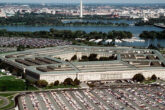February 15, 2021
Short-Term Action Items for Lloyd Austin's Pentagon
The Pentagon has elephantine inertia. Its size, the complexity of its missions, and the lead times of its processes combine to shrug off attempts to alter its trajectory. For a new administration, such as Defense Secretary Lloyd Austin and the initial cadre of political appointees at the Defense Department, four years can seem like ample time to wrestle the bureaucracy into compliance with its priorities. In reality, time is short, and the experienced hands that the Biden administration has tapped to lead the Pentagon know this. They will have to act quickly in key areas to respond to near-term demands, and to set changes in motion that will pay off in years to come. Striking a balance between dealing with urgent issues while beginning immediate work on desperately needed long-term structural reforms will be the overarching challenge for this team. Despite their different time horizons, both sets of activities must start today, so I propose the following brief “to-do” list for the Biden team to begin pushing the Pentagon in its preferred direction.
Striking a balance between dealing with urgent issues while beginning immediate work on desperately needed long-term structural reforms will be the overarching challenge for this team.
Dealing with the Elephants in the Room
There are two massive, urgent issues that Austin and his team are already dealing with: COVID-19 and cultural issues in the ranks. Regarding the former, the Biden plan envisions much greater Defense Department, and particularly National Guard, participation in supporting vaccination efforts. Given the Pentagon’s resources, planning and logistical capabilities, and can-do attitude, it would not be surprising to see the Defense Department’s role in the COVID-19 response grow over time. Austin and military leadership should make it clear to the White House and Congress that, while ready to support civil authorities as needed, the Defense Department should not be a substitute for a properly resourced public health sector. Internally, Pentagon leaders should be careful not to overcorrect for the debacle that was the U.S. government’s COVID-19 response by making public health and pandemic responses a key part of the next National Defense Strategy or its force-planning construct. Doing so might seem prudent today, but Pentagon leaders should keep in mind how this would continue militarizing properly civilian functions and distort the joint force’s mission set and priorities, likely without creating any meaningful change in its ability to respond to this sort of crisis. Instead, services and components will use these new demand signals to protect their budgets, end strength, and force structure, thereby hampering needed efforts to make the joint force more capable of deterring conflict with China or Russia.
Read the full article from War on the Rocks.
More from CNAS
-
The Department of Defense’s Breakthrough Nuclear Moment Risks Slipping Away
Unless they act, the Department of Defense’s breakthrough nuclear moment may vanish before it really happens....
By Will Rogers
-
DEFAERO Strategy Series [Apr 09, 25] CNAS' Becca Wasser and Phil Sheers on Revitalizing the U.S. Defense Industrial Base
On this episode of the Defense & Aerospace Report Strategy Series, sponsored by General Atomics Aeronautical Systems, Becca Wasser and Phil Sheers of the Center for a New Amer...
By Becca Wasser & Philip Sheers
-
From Production Lines to Front Lines
Executive Summary The U.S. defense industrial base (DIB) is struggling to meet the demands of the current strategic environment—let alone prepare for a potential conflict agai...
By Becca Wasser & Philip Sheers
-
The Pentagon’s Endangered Brain Trust
In this environment, sound assessments of emerging threats and new ideas to counter them will be especially vital....
By Dr. Andrew Krepinevich, Jr.




